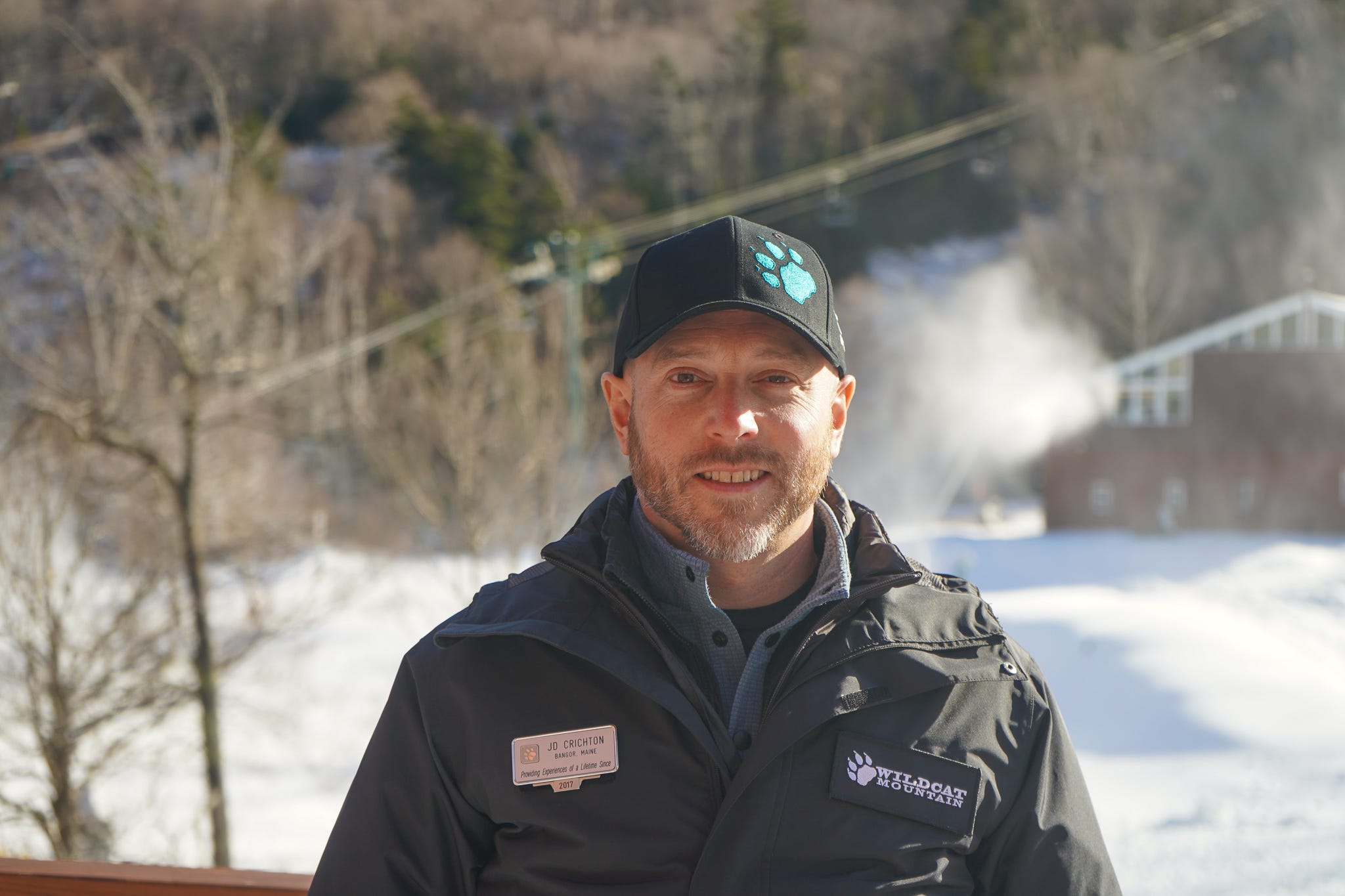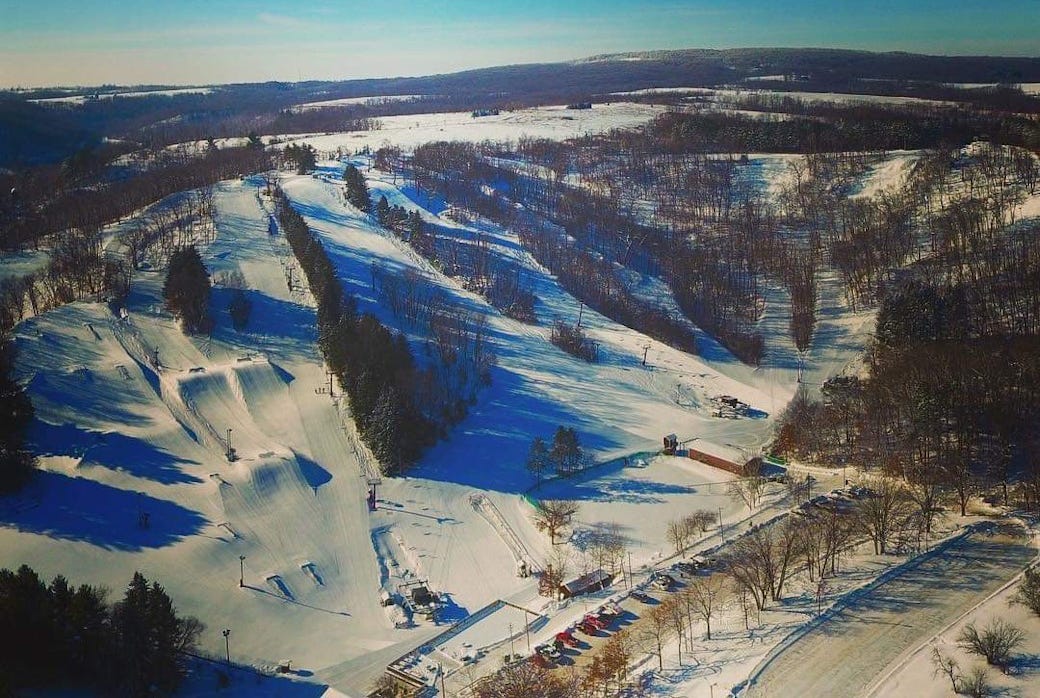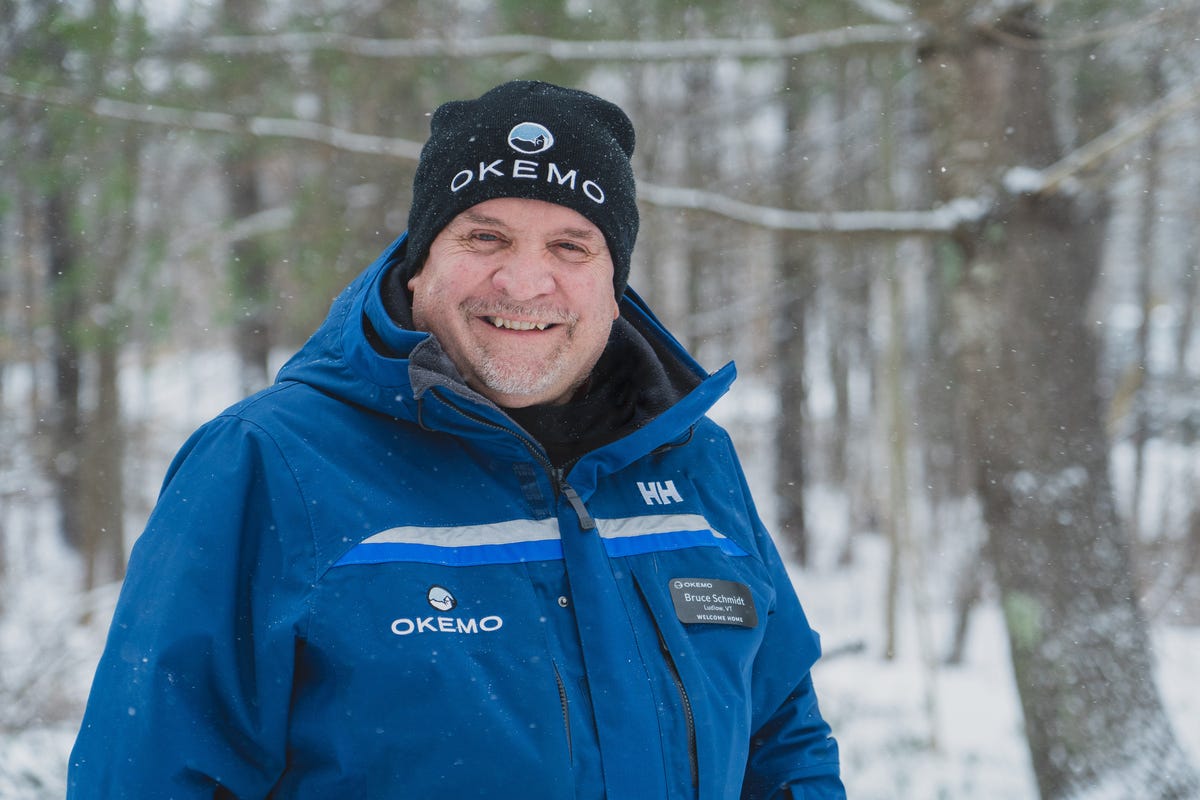Podcast #176: Wildcat General Manager JD Crichton
Description
This podcast hit paid subscribers’ inboxes on June 26. It dropped for free subscribers on July 3. To receive future pods as soon as they’re live, and to support independent ski journalism, please consider an upgrade to a paid subscription. You can also subscribe to the free tier below:
Who
JD Crichton, General Manager of Wildcat Mountain, New Hampshire
Recorded on
May 30, 2024
About Wildcat
Click here for a mountain stats overview
Owned by: Vail Resorts
Located in: Gorham, New Hampshire
Year founded: 1933 (lift service began in 1957)
Pass affiliations:
* Epic Pass, Epic Local Pass, Northeast Value Pass – unlimited access
* Northeast Midweek Pass – unlimited weekday access
Closest neighboring ski areas: Black Mountain, New Hampshire (:18), Attitash (:22), Cranmore (:28), Sunday River (:45), Mt. Prospect Ski Tow (:46), Mt. Abram (:48), Bretton Woods (:48), King Pine (:50), Pleasant Mountain (:57), Cannon (1:01 ), Mt. Eustis Ski Hill (1:01 )
Base elevation: 1,950 feet
Summit elevation: 4,062 feet
Vertical drop: 2,112 feet
Skiable Acres: 225
Average annual snowfall: 200 inches
Trail count: 48 (20% beginner, 47% intermediate, 33% advanced)
Lift count: 5 (1 high-speed quad, 3 triples, 1 carpet)
Why I interviewed him
I’ve always been skeptical of acquaintances who claim to love living in New Jersey because of “the incredible views of Manhattan.” Because you know where else you can find incredible views of Manhattan? In Manhattan. And without having to charter a hot-air balloon across the river anytime you have to go to work or see a Broadway play.*
But sometimes views are nice, and sometimes you want to be adjacent-to-but-not-necessarily-a-part-of something spectacular and dramatic. And when you’re perched summit-wise on Wildcat, staring across the street at Mount Washington, the most notorious and dramatic peak on the eastern seaboard, it’s hard to think anything other than “damn.”
Flip the view and the sentiment reverses as well. The first time I saw Wildcat was in summertime, from the summit of Mount Washington. Looking 2,200 feet down, from above treeline, it’s an almost quaint-looking ski area, spare but well-defined, its spiderweb trail network etched against the wild Whites. It feels as though you could reach down and put it in your pocket. If you didn’t know you were looking at one of New England’s most abrasive ski areas, you’d probably never guess it.
Wildcat could feel tame only beside Mount Washington, that open-faced deathtrap hunched against 231-mile-per-hour winds. Just, I suppose, as feisty New Jersey could only seem placid across the Hudson from ever-broiling Manhattan. To call Wildcat the New Jersey of ski areas would seem to imply some sort of down-tiering of the thing, but over two decades on the East Coast, I’ve come to appreciate oft-abused NJ as something other than New York City overflow. Ignore the terrible drivers and the concrete-bisected arterials and the clusters of third-world industry and you have a patchwork of small towns and beach towns, blending, to the west and north, with the edges of rolling Appalachia, to the south with the sweeping Pine Barrens, to the east with the wild Atlantic.
It’s actually pretty nice here across the street, is my point. Even if it’s not quite as cozy as it looks. This is a place as raw and wild and real as any in the world, a thing that, while forever shadowed by its stormy neighbor, stands just fine on its own.
*It’s not like living in New Jersey is some kind of bargain. It’s like paying Club Thump Thump prices for grocery store Miller Lite. Or at least that was my stance until I moved my smug ass to Brooklyn.
What we talked about
Mountain cleanup day; what it took to get back to long seasons at Wildcat and why they were truncated for a handful of winters; post-Vail-acquisition snowmaking upgrades; the impact of a $20-an-hour minimum wage on rural New Hampshire; various bargain-basement Epic Pass options; living through major resort acquisitions; “there is no intention to make us all one and the same”; a brief history of Wildcat; how skiers lapped Wildcat before mechanical lifts; why Wildcat Express no longer transforms from a chairlift to a gondola for summer ops; contemplating Wildcat Express replacements; retroactively assessing the removal of the Catapult lift; the biggest consideration in determining the future of Wildcat’s lift fleet; when a loaded chair fell off the Snowcat lift in 2022; potential base area development; and Attitash as sister resort.
Why I thought that now was a good time for this interview
Since it’s impossible to discuss any Vail mountain without discussing Vail Resorts, I’ll go ahead and start there. The Colorado-based company’s 2019 acquisition of wild Wildcat (along with 16 other Peak resorts), met the same sort of gasp-oh-how-can-corporate-Vail-ever-possibly-manage-a-mountain-that-doesn’t-move-skiers-around-like-the-fat-humans-on-the-space-base-in-Wall-E that greeted the acquisitions of cantankerous Crested Butte (2018), Whistler (2016), and Kirkwood (2012). It’s the same sort of worry-warting that Alterra is up against as it tries to close the acquisition of Arapahoe Basin. But, as I detailed in a recent podcast episode on Kirkwood, the surprising thing is how little can change at these Rad Brah outposts even a dozen years after The Consumption Event.
But, well. At first the Angry Ski Bros of upper New England seemed validated. Vail really didn’t do a great job of running Wildcat from 2019 to 2022-ish. The confluence of Covid, inherited deferred maintenance, unfamiliarity with the niceties of East Coast operations, labor shortages, Wal-Mart-priced passes, and the distractions caused by digesting 20 new ski areas in one year contributed to shortened seasons, limited terrain, understaffed operations, and annoyed customers. It didn’t help when a loaded chair fell off the Snowcat triple in 2022. Vail may have run ski resorts for decades, but the company had never encountered anything like the brash, opinionated East, where ski areas are laced tightly together, comparisons are easy, and migrations to another mountain if yours starts to suck are as easy as a five-minute drive down the road.
But Vail is settling into the Northeast, making major lift upgrades at Stowe, Mount Snow, Okemo, Attitash, and Hunter since 2021. Mandatory parking reservations have helped calm once-unmanageable traffic around Stowe and Mount Snow. The Epic Pass – particularly the northeast-specific versions – has helped to moderate region-wide season pass prices that had soared to well over $1,000 at many ski areas. The company now seems to understand that this isn’t Keystone, where you can make snow in October and turn the system off for 11 months. While Vail still seems plodding in Pennsylvania and the lower Midwest, where seasons are too short and the snowmaking efforts often underwhelming, they appear to have cracked New England – operationally if not always necessarily culturally.
That’s clear at Wildcat, where seasons are once again running approximately five months, operations are fully staffed, and the pitchforks are mostly down. Wildcat has returned to the fringe, where it belongs, to being an end-of-the-road day-trip alternative for people who prefer ski areas to ski resorts (and this is probably the best ski-area-with-no-public-onsite lodging in New England). Locals I speak with are generally happy with the place, which, this being New England, means they only complain about it most of the time, rather than all of the time. Short of moving the mountain out of its tempestuous microclimate and into Little Cottonwood Canyon, there isn’t much Vail could do to change that, so I’d suggest taking the win.
What I got wrong
When discussing the installation of the Wildcat Express and the decommissioning of the Catapult triple, I made a throwaway reference to “whoever owned the mountain in the late ‘90s.” The Franchi family owned Wildcat from 1986 until selling the mountain to Peak Resorts in 2010.
Why you should ski Wildcat
There isn’t much to Wildcat other than skiing. A parking lot, a baselodge, scattered small buildings of unclear utility - all of them weather-beaten and slightly ramshackle, humanity’s sad ornaments on nature’s spectacle.
But the skiing. It’s the only thing there is and it’s the only thing that matters. One high-speed lift straight to the top. There are other lifts but if the 2,041-vertical-foot Wildcat Express is spinning you probably won’t even notice, let alone ride, them. Straight up, straight down. All day long or until your fingers fall off, which will probably take about 45 minutes.
The mountain doesn’t look big but it is big. Just a few trails off th
























